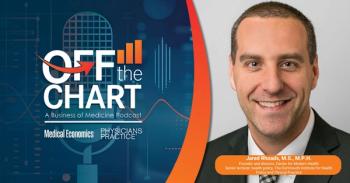
Physicians have new tools for treating, monitoring diabetes
2017 has seen two key advancements for diabetes patients, but affordability remains an issue.
This year brought continued positive data about the overall class effects of sodium-glucose co-transporter-2 (SGLT2) inhibitors in patients with type 2 diabetes.
“There is a whole set of information about the intersection of these drugs and their effect on heart disease and kidney disease,” Zachary T. Bloomgarden, MD, clinical professor of medicine, endocrinology, diabetes and bone disease at Mount Sinai in New York. “There are all of these tracks coming together that have the potential to totally change our treatment [of diabetes] over a short period of time.”
For decades, metformin has been used as a first-line treatment for people diagnosed with type 2 diabetes. However, according to Bloomgarden, there is a possibility that the standard use of first-line metformin may be going away.
“Metformin is anOK drug, but it has no particular intrinsic benefit for these patients,” Bloomgarden told Medical Economics. “Whereas, we have got multiple sources of evidence that suggest a real reduction in progression of kidney disease and a certain form of protection against heart disease outcomes with SGLT2 inhibitors.”
To a lesser extent, the same is also true with glucagon-like peptide-1 receptor agonists, he added.
“As we progress with this research we may be saying that-certainly for high-risk people characterized by either high risk heart disease or by kidney disease-that SGLT2s are associated with benefit in a variety of settings,” Bloomgarden said.
The other big story of 2017 relates to continuous glucose monitoring (CGM). According to Bloomgarden, this type of technology was “sort of a dream” a decade ago, and is now a complete reality.
The use of CGM should allow physicians and researchers to obtain profiles of glucose levels continuously for patients with type 1 or type 2 diabetes. These measurements will allow for more meaningful information beyond that gained with HbA1c testing or glucose self-monitoring.
“We should really be able to better address hypoglycemia problems in a very meaningful way,” Bloomgarden said.
Affordability remains an obstacle
Both of these advances do come with some questions of affordability, however.
According to Bloomgarden, there are some issues when it comes to paying for SGLT2 inhibitors. He recalled a patient recently coming into the office worried because his insurance company would no longer cover his SGLT2 inhibitor after the end of the year. Bloomgarden said he spent about 20 minutes to 30 minutes with the patient on the phone with the insurance company trying to obtain prior authorization for the medications only to be disconnected.
“This reflects another very important story in medical economics, which is the importance of developing ways of pushing back against pharmacy medicine managers now that we have the opportunity to give drugs that really reduce adverse outcomes,” Bloomgarden said.
Expanding use of CGM has similar issues as well.
“Affording this technology is still a question,” he said. “We hope to see this become a more available treatment technology.”
Newsletter
Stay informed and empowered with Medical Economics enewsletter, delivering expert insights, financial strategies, practice management tips and technology trends — tailored for today’s physicians.








